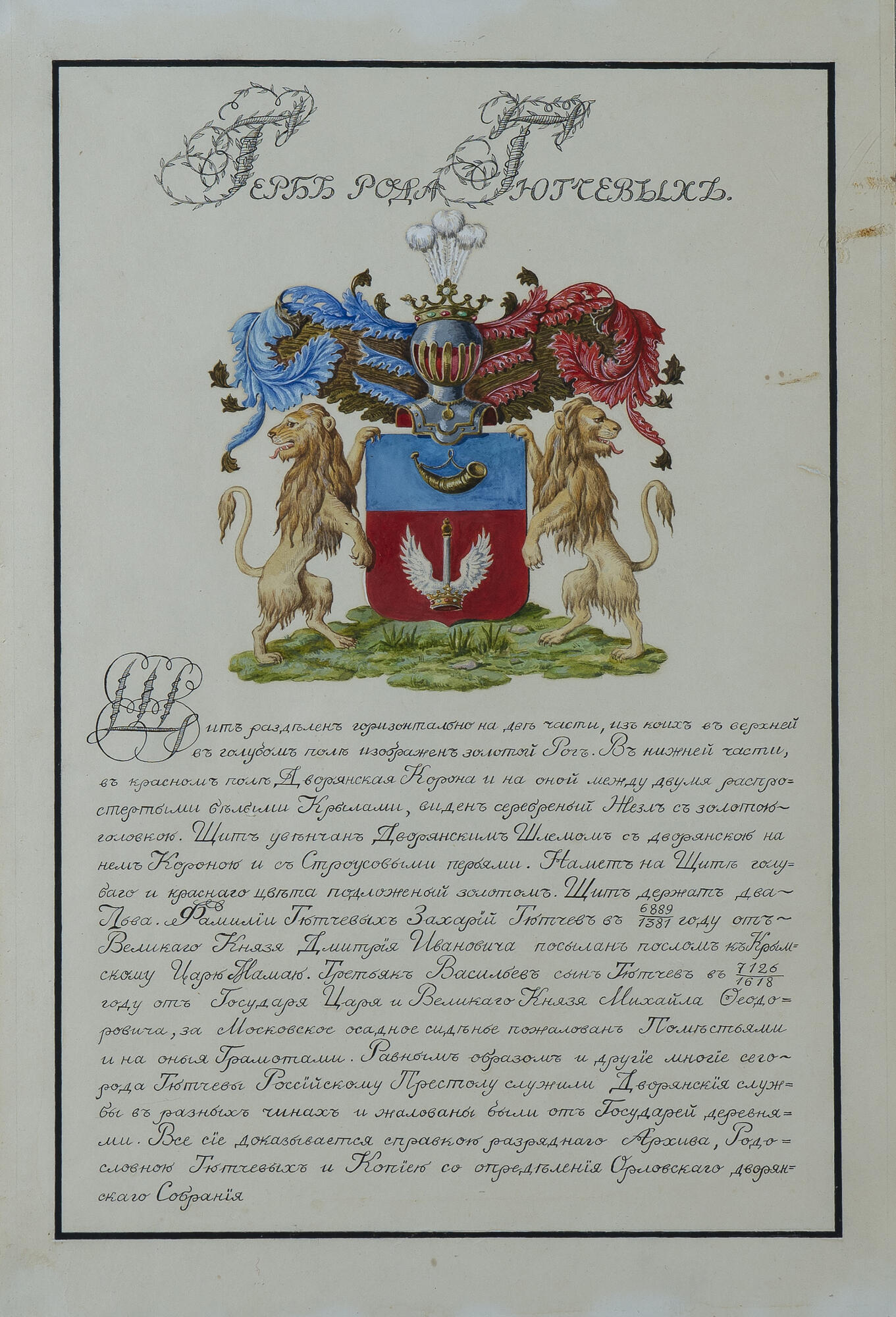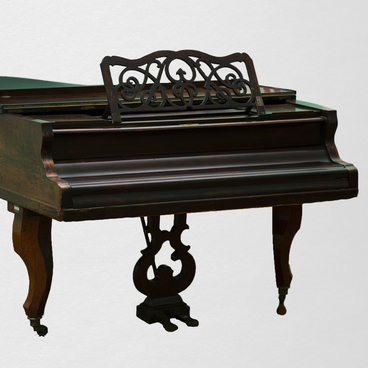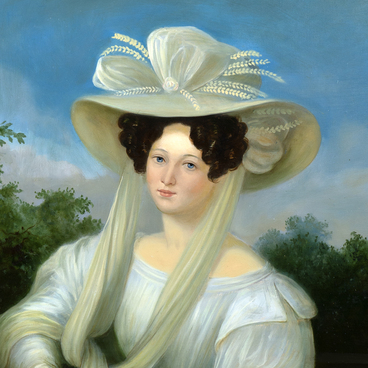The coat of arms of the Tyutchev family is included in the sixth part of the General Armorial of the Noble Families of the Russian Empire — a collection of descriptions and images of coats of arms, which was established by Paul I. The poet’s ancestors were brave soldiers and statesmen. One of the earliest entries mentions Zakhary Tutchev, a prominent figure in the 14th-century Muscovite Russia. He became known in history as a faithful companion of Prince Dmitry Donskoy, whose name is mentioned in ‘The Tale of the Mamai Massacre.’ His descendant, Boris Tyutchev, served as a voivode (military commander) in Suzdal.
The Tyutchev family coat of arms is composed of a shield that is divided into two parts. At the top, on a blue field, there is a golden horn. At the bottom there is a noble crown on a red field, and on it, between two outstretched white wings, is a silver staff. The shield is topped with a nobleman’s helmet and a crown. It is held by two lions. The lion is considered one of the oldest heraldic symbols of strength, courage and generosity.
The main parts of any coat of arms, including the noble one, were an escutcheon, a crown, a crest and a mantling (a heraldic decoration). The main element has always been the shield. The crown was considered a symbol of power, dignity and honorary title. In the coat of arms of the Tyutchevs, the noble crown is placed on the helmet and then depicted once again in the lower part of the shield. It also had the meaning of supremacy. The next element, the helmet, was placed above the shield. It signifies that its owner belongs to a noble family. Above the helmet is a crest in the form of ostrich feathers. They were considered a sign of special distinction among soldiers. The wings symbolized excellence and inspiration, and the horn stood for abundance. The mantling was also an indispensable part of the noble coat of arms — it was a decorative composition of bizarre branches and leaves.
In the Tyutchev family coat of arms, the upper field of the shield is blue. It symbolized beauty, grandeur, and hope. The bottom field is red, this color meant courage, military valor and glory. Traditionally, the coat of arms in the family was passed from father to son, reminding the later generations of their ancestors’ deeds.
The Tyutchev family coat of arms is composed of a shield that is divided into two parts. At the top, on a blue field, there is a golden horn. At the bottom there is a noble crown on a red field, and on it, between two outstretched white wings, is a silver staff. The shield is topped with a nobleman’s helmet and a crown. It is held by two lions. The lion is considered one of the oldest heraldic symbols of strength, courage and generosity.
The main parts of any coat of arms, including the noble one, were an escutcheon, a crown, a crest and a mantling (a heraldic decoration). The main element has always been the shield. The crown was considered a symbol of power, dignity and honorary title. In the coat of arms of the Tyutchevs, the noble crown is placed on the helmet and then depicted once again in the lower part of the shield. It also had the meaning of supremacy. The next element, the helmet, was placed above the shield. It signifies that its owner belongs to a noble family. Above the helmet is a crest in the form of ostrich feathers. They were considered a sign of special distinction among soldiers. The wings symbolized excellence and inspiration, and the horn stood for abundance. The mantling was also an indispensable part of the noble coat of arms — it was a decorative composition of bizarre branches and leaves.
In the Tyutchev family coat of arms, the upper field of the shield is blue. It symbolized beauty, grandeur, and hope. The bottom field is red, this color meant courage, military valor and glory. Traditionally, the coat of arms in the family was passed from father to son, reminding the later generations of their ancestors’ deeds.



